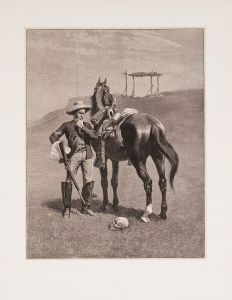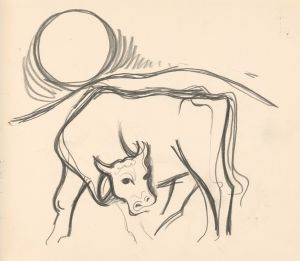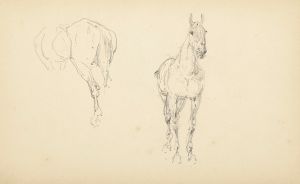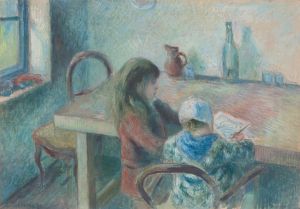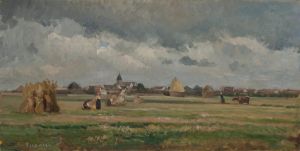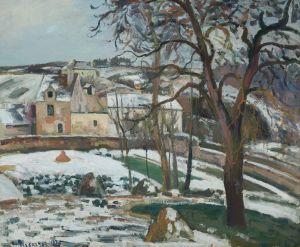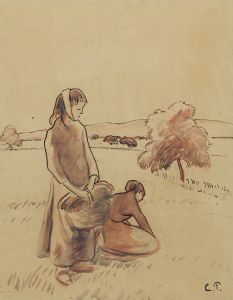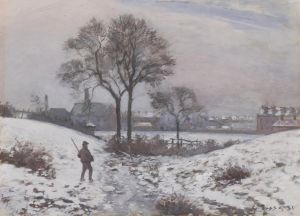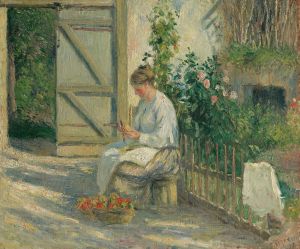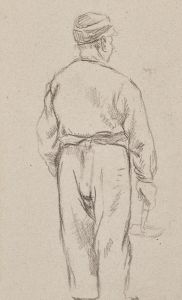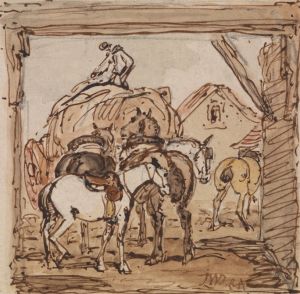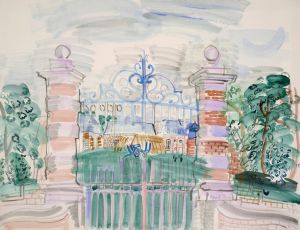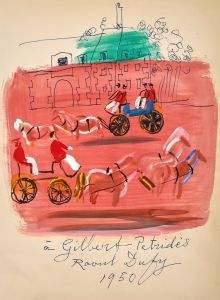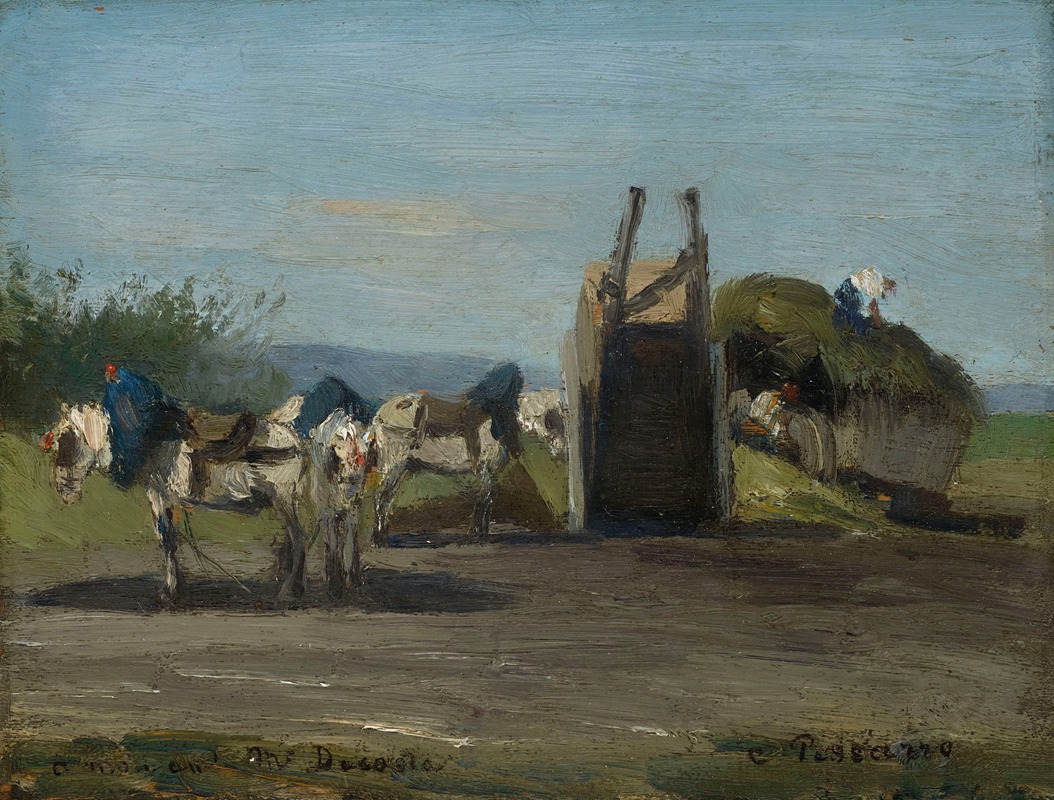
Chevaux blancs et charrettes
A hand-painted replica of Camille Pissarro’s masterpiece Chevaux blancs et charrettes, meticulously crafted by professional artists to capture the true essence of the original. Each piece is created with museum-quality canvas and rare mineral pigments, carefully painted by experienced artists with delicate brushstrokes and rich, layered colors to perfectly recreate the texture of the original artwork. Unlike machine-printed reproductions, this hand-painted version brings the painting to life, infused with the artist’s emotions and skill in every stroke. Whether for personal collection or home decoration, it instantly elevates the artistic atmosphere of any space.
Camille Pissarro, a prominent figure in the Impressionist movement, created the painting "Chevaux blancs et charrettes" during a period when he was deeply engaged in exploring rural and urban landscapes. Pissarro, born in 1830 on the island of St. Thomas in the Danish West Indies, moved to Paris in 1855, where he became a central figure in the Impressionist circle, which included artists like Claude Monet, Edgar Degas, and Pierre-Auguste Renoir.
"Chevaux blancs et charrettes" is a testament to Pissarro's fascination with rural life and the natural environment. The painting depicts white horses and carts, a subject that reflects Pissarro's interest in the everyday lives of rural workers and the landscapes they inhabited. This focus on rural scenes was a common theme in Pissarro's work, as he often sought to capture the simplicity and beauty of the countryside.
Pissarro's technique in "Chevaux blancs et charrettes" is characteristic of his Impressionist style, which emphasizes the effects of light and atmosphere. He employed loose brushwork and a vibrant palette to convey the movement and vitality of the scene. The use of light in the painting is particularly noteworthy, as Pissarro skillfully captures the play of sunlight on the horses and carts, creating a sense of immediacy and realism.
Throughout his career, Pissarro was known for his commitment to painting en plein air, or outdoors, which allowed him to observe and capture the changing effects of light and weather on the landscape. This approach is evident in "Chevaux blancs et charrettes," where the natural setting is rendered with an authenticity that reflects Pissarro's dedication to depicting the world as he saw it.
Pissarro's work was influential in the development of Impressionism, and he was instrumental in organizing the first Impressionist exhibition in 1874. Despite facing criticism and financial difficulties throughout his career, Pissarro remained committed to his artistic vision, continually experimenting with new techniques and subjects.
"Chevaux blancs et charrettes" is a fine example of Pissarro's ability to capture the essence of rural life with sensitivity and nuance. His portrayal of the horses and carts is not only a depiction of a specific moment in time but also a reflection of the broader social and economic changes occurring in France during the late 19th century. The painting serves as a reminder of the enduring connection between humans and nature, a theme that resonates throughout Pissarro's body of work.
Today, Camille Pissarro is celebrated as one of the founding figures of Impressionism, and his paintings are held in high regard by art historians and collectors alike. "Chevaux blancs et charrettes" continues to be appreciated for its artistic merit and its contribution to the Impressionist movement, exemplifying Pissarro's skill in capturing the beauty and complexity of the world around him.





